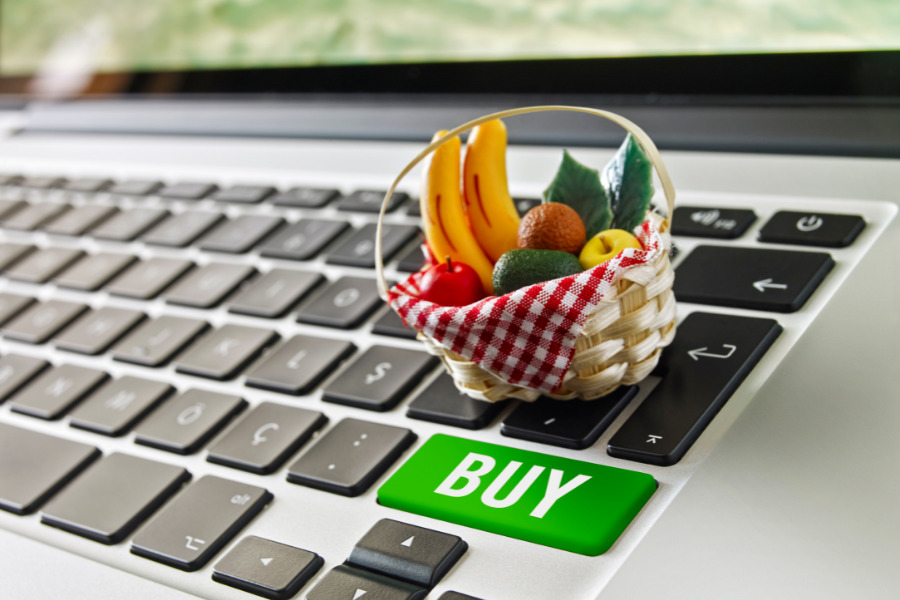Pandemic pressure from consumers has supercharged e-commerce technology and triggered its rapid adoption, ultimately blurring the boundaries between traditional food categories like never before.
The stage is now set for an omnichannel future wherein providers who prioritize digital innovation, delivery, and convenience take all.
Choose Your Own Adventure
The term “omnichannel” refers to a fully integrated approach to commerce that seeks to provide customers with a seamless buying experience, whether they’re shopping online from a desktop or mobile device, by telephone, or in a brick-and-mortar store, reported Forbes (Jul 2020).
“Great omnichannel retailing…is a mindset, a belief system that places the consumer at the center of a flexible, almost choose your own adventure style of retailing, whenever and however he or she desires it,” said Chris Walton, a Forbes retail contributor.
Here’s a look at some recent omnichannel advancements that are reverberating across traditional (and not so traditional) food categories.
Quick Service Restaurants
Over the past year, fast-food chains have experienced rapid growth and evolution driven by the pandemic’s reliance upon quick, contactless service.
- Several major chains, including Chick-fil-A, Wendy’s, and Burger King, continue to expand their ghost kitchen operations and lean further into the delivery space as a cost-effective way to penetrate bigger markets.
- Restaurants including IHOP, Panera Bread, Starbucks, and Taco Bell have invested in streamlined concept spaces and/or significant digital enhancements, including menu customization, dedicated order-ahead drive-thru lanes, and smart kitchen technology.
- McDonalds is testing AI voice recognition technology at ten of its Chicago locations, reported QSR Magazine. (June 3).
According to Transparency Market Research, the rising demand for automation and advanced technology will bring tremendous growth opportunities for the quick service restaurants IT market during the forecast period of 2020-2027.
Convenience Stores and Pharmacies
C-Stores and pharmacies experienced a significant increase in traffic throughout the pandemic, sparking expanded service options and increased product availability.
- Multiple chains, including Walgreens, Wawa, and Circle K, have formed partnerships with third-party delivery services, reported Dayton Business Journal. (May 12).
- In addition to extensive M&A activity, 7-Eleven is making inroads in the QSR space with new concept stores in Virginia.
- Pharmacies like CVS are expanding their grocery selections to include more frozen foods and ready-made meals, reported Supermarket News. (April 14).
Grocery Retail
Grocery e-commerce spending increased by $26 billion in 2020, with pandemic demands driving retail grocers and big box merchants to enhance their digital innovation strategies.
While brick-and-mortar retailer websites accounted for 69% of this increase, competition across the category remains fierce.
- In addition to on-location drone delivery, The Kroger Co.’s omnichannel strategy includes 20 automated warehouses that utilize AI and advanced robotics for fulfillment, picking and delivery, reported Supermarket News (April 14).
- Throughout the pandemic, Amazon opened 11 brick and mortar Amazon Fresh stores around the U.S. and plans to launch at least 28 more in 2021, reported Bloomberg (March 11). The company is also experimenting with biometric technology in several Whole Foods locations.
- Walmart is continually evolving its digital infrastructure and testing delivery innovations that include smart, temperature-controlled lockers and autonomous vehicles, reported Supermarket News (June 8).
Third-Party Delivery Services
While the future of third-party food delivery providers remains unclear, some companies are challenging boundaries and accelerating the shift toward omnichannel commerce. According to Edge Retail Insight, those who innovate successfully stand to overtake some of the biggest U.S. retailers in e-commerce sales by 2025, reported Supermarket News (June 4).
DoorDash saw sales nearly triple in the first three months of 2021, following its nationwide expansion into grocery and C-store delivery, reported Yahoo Finance (5/13). The company also launched its independently owned convenience store concept platform DashMart in August 2020.
Meanwhile, UberEats is after a whole new category of logistics, increasingly billing their specialty not as food but as speed and convenience.
“Amazon powers next-day delivery. We’re going to power next-hour commerce,” Raj Beri, Uber Technologies Inc.’s global head of grocery and new verticals, told The Wall Street Journal (May 31).











